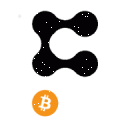
Have you heard of the term “crypto burning”? This is something that the companies behind the crypto tokens do to increase the value of their tokens by limiting the supply. But what exactly happens during crypto burning? How does crypto burning work? Why do companies do that? If all of these questions are arising in your mind right now, we are here to answer each one of them.
What does Burning Mean in Crypto?
Burning in crypto refers to the process of sending tokens to a wallet address which is outside the network. Hence, it can not be used for making transactions other than receiving tokens. Crypto Burning removes the tokens from the circulatory chain and limits the supply of tokens in the crypto market. The wallet address that receives the burnt tokens acts as a burner or eater address. So whenever a token goes to a burner wallet address, the token goes away forever and no one can bring it back. Now you may wonder that if the coin is sent to a wallet address, we can always track the private key and bring the token back. But that is not the case here. Eater wallets do not have any private keys unlike traditional crypto wallets, each of which have their own private key.
How does Crypto Burning Work?
Crypto burning works through a specialized consensus mechanism known as Proof of Burn. This is a new and improved version of Proof of Work consensus protocol in which several computers race amongst themselves to be the first computer to guess the hash number. In the Proof of Work protocol, all the participating computers have to agree on the validation of a block on the network blockchain. However, Proof of Burn is an energy sensitive approach to the Proof of Work protocol where the miners have to burn the tokens before they can mine them. Once the developers burn the tokens, they can write new blocks whose number is proportional to the amount of tokens burnt.
Utility of Crypto Burning
Since many crypto projects burn their tokens intentionally, there may be some practical utility of crypto burning for the projects. Indeed there are a few applications of burning crypto that are not only beneficial for the current holders of the currency and the project, but also for the network on which it is built. Here are three major use cases of crypto burning.
Increases the Token Value When Intentionally Burnt
Let us understand this use case with an example of traditional stocks. When an investor buys stocks of a company, it lends part-ownership of the company’s assets to the investor. Sometimes, some investors may buy the majority of the stocks to later on claim the ownership of the entire company. To prevent the occurrence of such incidents, companies buy their own stocks back to retain the ownership of the company. Additionally, as the demand of the stocks appear to increase, the prices of the shares also increase.
Crypto burning is just similar to this. The developers burn the tokens to limit the supply of tokens in the market. Now that a limited number of tokens are available for investors in the market, this creates scarcity around the token. Further, this leads to an increase in the prices of the tokens. So, sometimes projects intentionally burn their own tokens or the tokens of an alternative chain to increase the token value.
Keeps the Network Active
When miners send the tokens to a burner wallet, this removes some tokens from the network. This doesn’t involve any additional amount of energy for burning the tokens. The energy is required only for the token minting process before burning the tokens. However, doing so ensures that the network remains agile and active. As you may know, a large network of computers goes useless because Bitcoins are continuously mined from the network. Burning eliminates this possibility. In addition, the developers obtain rewards in the form of native token of the blockchain for mining as well as burning the tokens.
Promotes Balance in the Mining Process
Now you may wonder the height of advantages that the early adopters of crypto burning may have achieved over the new users. But that is not possible with the Proof of Burn consensus algorithm that ensures regular burning of tokens in order to generate new tokens. The improved version of the Proof of Work consensus algorithm makes it harder and time consuming for developers to mine successive coins. In this, whenever a new coin is mined, the speed of mining the coins is reduced considerably. So even mining farms having plenty of energy to mine coins can not do so, until they burn their older coins. This keeps a balance between the early miners and the new ones.
Challenges in Crypto BurningHow does Crypto Burning Work?
Since crypto burning involves sending the tokens to a wallet address having no private key, anyone can burn the tokens and inflate the prices of tokens unnecessarily. Also, as there are no regulatory bodies overlooking the operations related to crypto, it is not possible to track down the developer who burnt the coins. In addition to this, Proof of Burn may not be an eco-friendly approach. This is because crypto burning happens with an objective to mine new coins. As we all know how energy-intensive the mining process of some coins such as Bitcoin are, crypto burning may not be a sustainable solution to increasing the token value.
Conclusion
As we mentioned above, sometimes projects intentionally burn their tokens to increase the value of tokens. This can also increase the prices of tokens having no practical value. So, investors should always think twice while buying burnt coins as they may not yield any long-term benefits.











